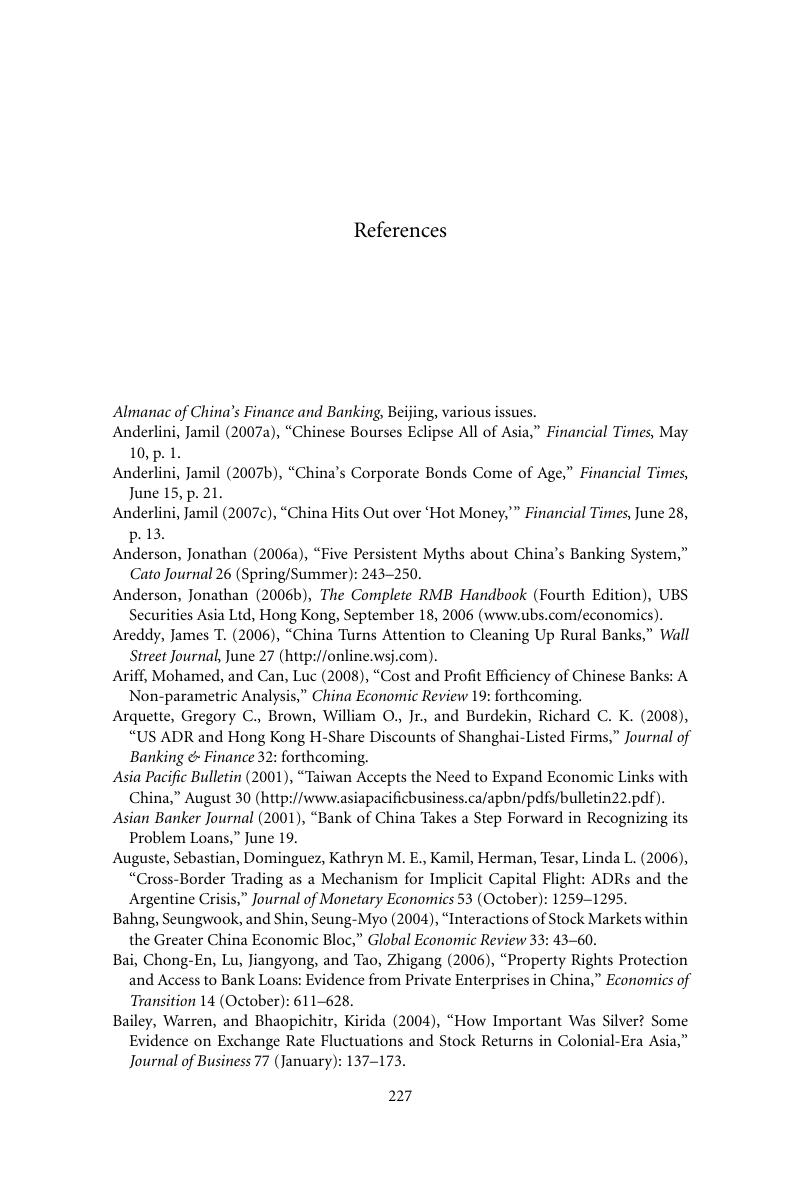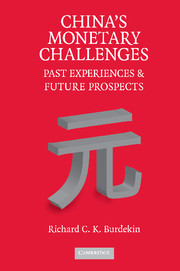Book contents
- Frontmatter
- Contents
- Preface
- Introduction: China Today and Lessons from the Past
- PART I CHINA'S EXCHANGE RATE REGIME AND MONETARY POLICY
- PART II THE IMPORTANCE OF INTERNATIONAL FACTORS, PAST AND PRESENT
- PART III THE PEOPLE'S REPUBLIC'S ROLE WITHIN GREATER CHINA AND ASIA
- 10 Conclusions and Future Prospects for the Renminbi
- References
- Author Index
- Subject Index
- References
References
Published online by Cambridge University Press: 06 July 2010
- Frontmatter
- Contents
- Preface
- Introduction: China Today and Lessons from the Past
- PART I CHINA'S EXCHANGE RATE REGIME AND MONETARY POLICY
- PART II THE IMPORTANCE OF INTERNATIONAL FACTORS, PAST AND PRESENT
- PART III THE PEOPLE'S REPUBLIC'S ROLE WITHIN GREATER CHINA AND ASIA
- 10 Conclusions and Future Prospects for the Renminbi
- References
- Author Index
- Subject Index
- References
Summary

- Type
- Chapter
- Information
- China's Monetary ChallengesPast Experiences and Future Prospects, pp. 227 - 248Publisher: Cambridge University PressPrint publication year: 2008



